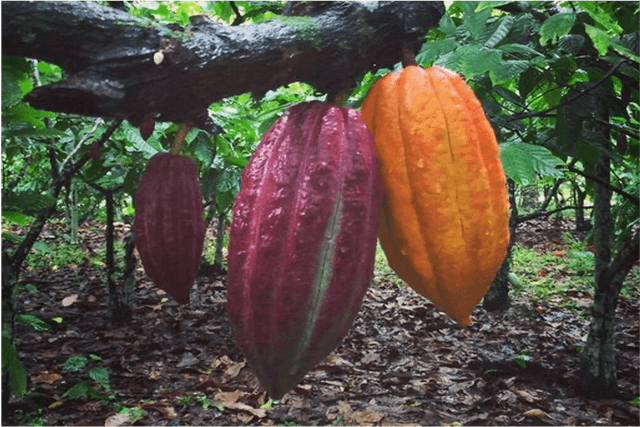
Brazilian Cacao History
Cacao Boom Period
In 1746 cacao arrived in the Brazilian state of Bahia. It was not at all a big hit – planters preferred to grow sugar cane, a much easier crop with a good export market. It took almost 100 years for cacao to become a popular crop in Bahia. Around 1820 pioneer cacao planters started to cut their way into the dense Mata Atlantica forest, machete in one hand, bag with cacao seeds in the others.
Today, these pioneers have a mythical status in the region. Unlike the sugar plantation owners they did the work themselves – no slaves involved –, and they were from humble descend, some of them former slaves. Their pioneering work eventually made cacao the most important crop of Bahia. With a production of almost 400,000 ton by 1986 cacao export made up half of the State's total export. No wonder that this area was called Costa do Cacao or Cacao Coast.
Disaster strikes
In 1989, Moniliophthora perniciosa, or Witches' Broom disease, started to spread like wildfire in plantations on the Cacao Coast, turning healthy trees into sickly weaklings with rotting pods and nasty-tasting beans. Within the span of a few years cacao production fell by 90%, plantations were locked up, 75% of the cacao forests were destroyed, 200,000 people lost their job, and Brazil turned from being the 3rd largest cacao producer in the world into a net importer of cacao.
An act of agro-bioterrorism?
Witches' Broom disease is not native to Bahia, it grows some 1,600 km to the west in the heart of the Amazonian rainforest. For many years people wondered how Witches' Broom suddenly appeared in Bahia's Cacao Coast and why it spread so quick to every corner of the cacao belt. Many believe the disease was brought to Bahia by hand. Rumour says it was a case of bio-terrorism. This rumour was confirmed by the first farmers who discovered Witches' Broom on their land: they found dried Witches' Broom branches tied to the trunk of healthy cacao trees.
The question is, whose hands tied the sick branches to the trees? In 2006, a leftist activist confessed he repeatedly brought the disease to Bahia. His goal was to break the power of the cacao barons and improve the living conditions of the labourers on the plantations. Being an employee of a governmental agricultural agency he could easily sneak the contaminated branches into Bahia. The wind would take care of the rest.
However, some people doubt this explanation. They suspect farmers in the area to actively have spread Witches' Broom to other farms, because their own farm was already infected, and they preferred to 'all go down together'.
Other people believe Ivory Coast and Ghana are behind the Witches' Broom attack in Bahia to get rid of a powerful competitor on the world cacao market. This scenario makes Bahia's Cacao Coast a victim of agro-warfare between countries.
Cabruca as protection against Witches' Broom
Perhaps we will never know the truth about the arrival of Witches' Broom in Brazil's Cacao Coast. What we do know is that since the disastrous 1990ies the Bahian cacao industry has made a recovery. Which is good for more than one reason. With production losses associated with Witches' Broom disease, farmers are tempted to start producing other cash crops, like palm oil, eucalyptus, banana or other monoculture crops that require the destruction of forest cover. Instead, farmers in Bahia chose to cultivate cacao in a system called cabruca. In this agricultural practice cacao trees are planted under the shade of forest trees. This is not only a perfect environment for cacao to flourish, but also helps to preserve biodiversity and protect the Mata-Atlantica rainforest. Witches' Broom disease might still be present, but it is controlled with the right level of moisture provided by the forest environment. All in all, we can say that the Bahian cacao industry came out stronger and more resilient – a happy ending of the Witches' Broom horror story.
